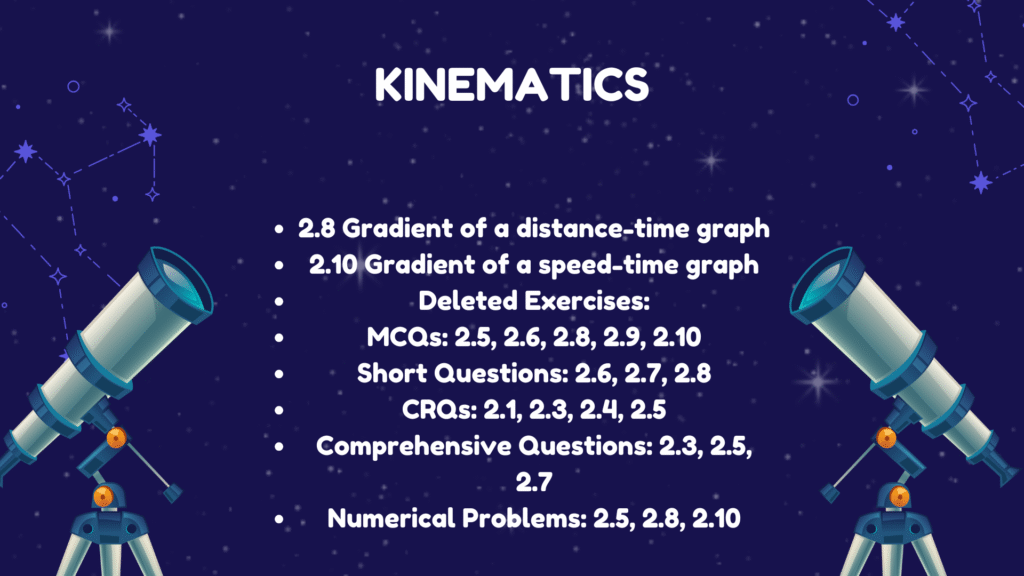9th Class Physics Smart Syllabus 2025–26 – Punjab Board




The Punjab Board has officially announced the 9th Class Physics Smart Syllabus 2025–26. This new syllabus helps students focus only on the most important chapters and topics that are included in the upcoming annual exams. It is specially designed to reduce the study burden and make exam preparation easier and more effective.
In the Smart Syllabus of Physics, some chapters have been shortened, and a few topics have been excluded. Students are advised to prepare only the topics included in this syllabus for better results. This syllabus will be followed by all Punjab Boards including Lahore, Gujranwala, Multan, Faisalabad, Rawalpindi, Sahiwal, Bahawalpur, and DG Khan.
If you are a student of 9th Class, this is your updated Physics syllabus that you must study for exams in 2025–26. You can download the official smart syllabus PDF from the link given below.
Revised Syllabus
📘 Included Boards
Lahore Board
Gujranwala Board
Multan Board
Faisalabad Board
Rawalpindi Board
Sahiwal Board
Bahawalpur Board
DG Khan Board
📘 Chapter-wise Deleted Topics and Exercises
Chapter 1: Physical Quantities & Measurements
Deleted Topics:
1.6 Mass measuring instruments
1.7 Time measuring instruments
1.8 Errors in measurements
1.10 Uncertainty in a measurement
1.12 Precision and Accuracy
Deleted Exercises:
MCQs: 1.3, 1.6, 1.8, 1.11
Short Questions: 1.5, 1.8, 1.9, 1.10, 1.11
CRQs: 1.1, 1.2, 1.4, 1.8, 1.10
Comprehensive Questions: 1.3, 1.4, 1.5
Numerical Problems: 1.2, 1.5, 1.7, 1.9
Chapter 2: Kinematics
Deleted Topics:
2.3 Types of Motion
2.8 Gradient of a distance-time graph
2.10 Gradient of a speed-time graph
Deleted Exercises:
MCQs: 2.5, 2.6, 2.8, 2.9, 2.10
Short Questions: 2.6, 2.7, 2.8
CRQs: 2.1, 2.3, 2.4, 2.5
Comprehensive Questions: 2.3, 2.5, 2.7
Numerical Problems: 2.5, 2.8, 2.10
Chapter 3: Dynamics
Deleted Topics:
3.2 Fundamental forces
3.3 Forces in a free body diagram
3.5 Limitation of Newton’s laws of motion
3.7 Mechanical and electronic balances
Deleted Exercises:
MCQs: 3.4, 3.7, 3.8
Short Questions: 3.7, 3.8, 3.10
CRQs: 3.3, 3.5
Comprehensive Questions: 3.6
Numerical Problems: 3.5, 3.6, 3.8, 3.9
Chapter 4: Turning Effect of Force
Deleted Topics:
4.7 Centre of gravity and centre of mass
4.11 Improvement of stability
4.12 Application of stability in real life
Rotational motion versus translational motion
Deleted Exercises:
MCQs: 4.4, 4.5, 4.6, 4.8
Short Questions: 4.5, 4.6, 4.8, 4.9, 4.10
CRQs: 4.3, 4.5
Comprehensive Questions: 4.2, 4.4
Numerical Problems: 4.2, 4.5, 4.6, 4.9, 4.10
Chapter 5: Work, Energy and Power
Deleted Topics:
5.4 Sources of energy
5.6 Advantages and disadvantages of methods of energy production
Deleted Exercises:
MCQs: 5.2, 5.4, 5.7
Short Questions: 5.3, 5.6, 5.10
CRQs: 5.2, 5.5, 5.8, 5.9
Comprehensive Questions: 5.3, 5.5
Numerical Problems: 5.2, 5.5, 5.7, 5.8, 5.9, 5.12, 5.13
Chapter 6: Mechanical Properties of Matter
Deleted Topics:
Applications of Hooke’s law
6.7 Measurement of atmospheric pressure
6.8 Measurement of pressure by manometer
Activities 6.1 and 6.6
Deleted Exercises:
MCQs: 6.2, 6.4, 6.5
Short Questions: 6.2, 6.6, 6.9
CRQs: 6.1, 6.3, 6.4, 6.7, 6.9, 6.10
Comprehensive Questions: 6.2, 6.5
Numerical Problems: 6.3, 6.8, 6.10, 6.11, 6.12
Chapter 7: Thermal Properties of Matter
Deleted Topics:
7.1 Kinetic molecular theory of matter
7.4 Sensitivity, range, and linearity of thermometers
7.5 Structure of a liquid-in-glass thermometer
Deleted Exercises:
MCQs: 7.1, 7.2, 7.7, 7.10, 7.11
Short Questions: 7.1, 7.2, 7.3, 7.6, 7.9, 7.10, 7.11, 7.14, 7.15
CRQs: 7.4, 7.5, 7.7, 7.8, 7.10, 7.11, 7.12
Comprehensive Questions: 7.1, 7.4, 7.5
Numerical Problems: 7.5, 7.6
Chapter 8: Magnetism
Deleted Topics:
Applications of permanent magnets
Magnetic relay
Telephone receiver
8.8 Domain theory of magnetism
Alignment of domains
8.10 Application of magnets in recording technology
8.11 Soft iron as magnetic shield
Deleted Exercises:
MCQs: 8.3, 8.6, 8.7, 8.8
Short Questions: 8.5, 8.6, 8.7
CRQs: 8.3, 8.5
Comprehensive Questions: 8.5, 8.6
Chapter 9: Nature of Science
Deleted Topics:
9.4 Interdisciplinary research
9.6 Scientific base of technology and engineering
Deleted Exercises:
MCQs: 9.4, 9.5, 9.7, 9.11
Short Questions: 9.3, 9.7, 9.8
CRQs: 9.5, 9.6, 9.8, 9.9, 9.10
Comprehensive Questions: 9.2, 9.4
📚 Benefits of Smart Syllabus
Helps focus on important topics only
Saves study time
Reduces exam stress
Based on new Punjab Curriculum 2025–26
🔍 Related Smart Syllabus Links
[9th Class Chemistry Smart Syllabus 2025–26]
[9th Class Biology Smart Syllabus 2025–26]
[9th Class Computer Science Smart Syllabus 2025–26]
[9th Class Mathematics Smart Syllabus 2025–26]
Conclusion
The 9th Class Physics Smart Syllabus 2025–26 is a great step by the Punjab Board to make studies easier and more targeted. Download the syllabus now and start preparing according to the official guidelines to score well in your exams.
📥 Download PDF
Click Here to Download the Official 9th Class Physics Smart Syllabus 2025–26
